Jhulelal - Bera - Hee - Paar! Celebrating the birth of Sindhi deity Ishtadeva Udero Lal
02 Apr 2022 17:35:03
The first day of Hindu month Chaitra is celebrated all around the country, among various cultures and communities with different names but for the same purpose of beginning of a new era, a new and fresh year. The cultural diversity of India often results in unintended negligence of certain cultures or communities, who are a communal minority in the country. In such circumstances, it is our responsibility to gain knowledge and spread awareness of the culture of such communities, who have always been rooted to their motherland and have continued to preserve the legacy.
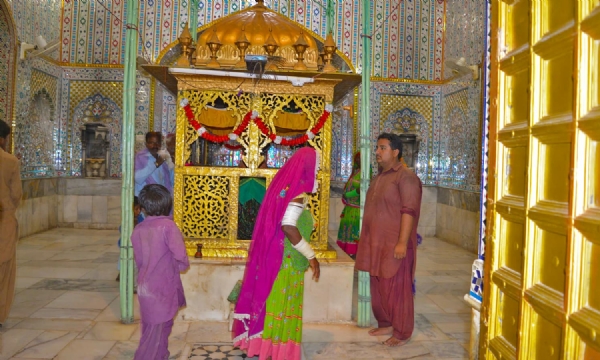
The Sindhis are one such Hindu community, about whom much little is known. Today, Sindhis around the world are celebrating the festival of Cheti Chand in remembrance of the birthof Bhagwan Jhulelal. What is Cheti Chand all about? Who was Bhagwan Jhulelal? What was his legacy? Let us all find out.
The month of Chaitra is auspicious of several Hindu communities as it marks the beginning of a new year according to the Hindu timeline. For Sindhis the month is auspicious because of the birth of their saviour deity of Bhagwan Jhulelal. Bhagwan Jhulelal is considered as the reincarnation of the Vedic deity, Varuna, the god of the oceans. The mithyas about the birth of Jhulelal and wonders he did after that provide significant information and clues about the life and culture of Sindhi people and the social dilemmas of a community who would always be the first one to the face the wrath of barbaric Islamic invasions.
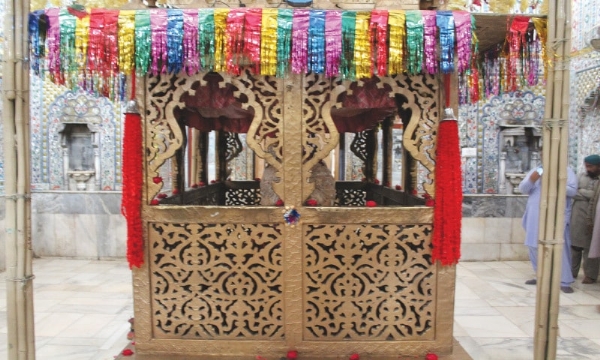
The festival of 'Cheti Chand' is celebrated on a day when the waxing phase of moon ends, marking the actual beginning of Chet month. It is observed on the first or second day of the Sindhi Chet month ( similar to Hindu month of Chaitra), which is why it is called as 'Chet-I-Chand'. According to the Sindhi myths, Bhagwan Jhulelal took birth for a cause and that cause was the cultural invasion of Sindh (region around the Indus river) by Islamic rulers and their forceful conversion.
The might of Sindh river and the resources that existed in the surrounding region attracted several Muslim invaders from Arabia and Persia. Besides, as the region provided access to the farther land of the plains of Indian mainland, Sindh was frequently targeted by invaders. However, the same rulers not only wanted to loot the resources of the land, but according to the word of the prophet, Islamic invaders would ethnically destroy the cultures they would raid onto, by means of forceful conversions.
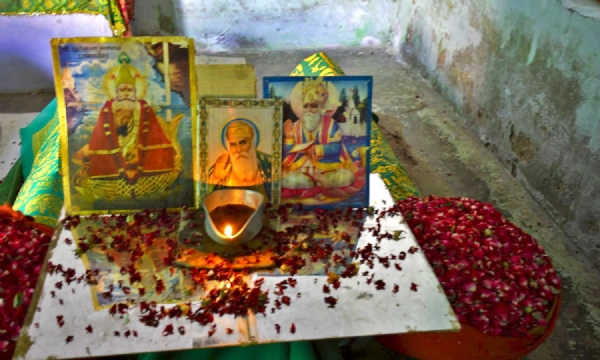
To understand the significance of Bhagwan Jhulelal for the Sindhis, we will have to head back in the 10th century AD. In the 10th century A.D. Sindh was under the rule of Samras, who were Hindu to Islam converts. They are described as neither bigots nor fanatics. The Samras made Sindh free from the foreign rule and were tolerant to all other religions. But the province of Thatta was an exception, as in the second half of the 10th century, it was usurped by Makrabkhan, who killed the previous ruler Shah Sahadat Khan and took over his throne, under the name of Mirkhshah.
It was a few of his courtiers who put the idea in his mind that if he spreads Islam in the region he will be granted the blessing of Jannat. Since Mirkshah was a greedy fanatic, he was lured by the idea of an elated life even after death. He summoned the Hindu panch and asked them to either embrace Islam or be prepared to die. With this, the Sindhis were left with nothing but pray god for their way out of the dilemma.
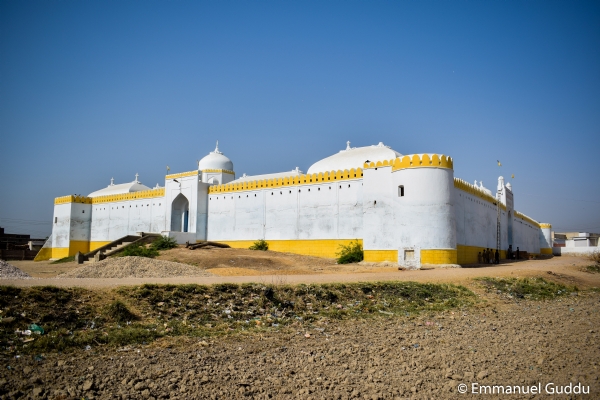
The Odero lal Shrine, Sindh rovince, Pakistan
Sindhis, being a community largely comprising of traders and merchants, often prayed to Varuna before they set out to sail, making him a dominant deity. It is believed that in response to people's prayers, Varunadeva promised that he will take birth yet again in a mortal form and put an end to this injustice, when he will be a child to Nassarpur's Devaki and Ratanchand Lohano. As promised Varundeva reincarnated in the village of Nassarpur on the 40th day of the promise made to people. The duration, however, varies among followers between the promise day and reincarnation day.
It is also believed that when the new born opened his mouth, his parents Devaki and Ratanchand saw therein Sindhu flowing and also an old man on Pallo fish. The peculiarity of the Pallo fish is that it swims against the current. The newborn was named 'Udaichand'. An astrologer who saw the child predicted that he would grow up to be a great warrior and his fame would outlive the child. Udaichand was also called 'Uderolal', 'Amar Laal' and 'Laal Sain.'
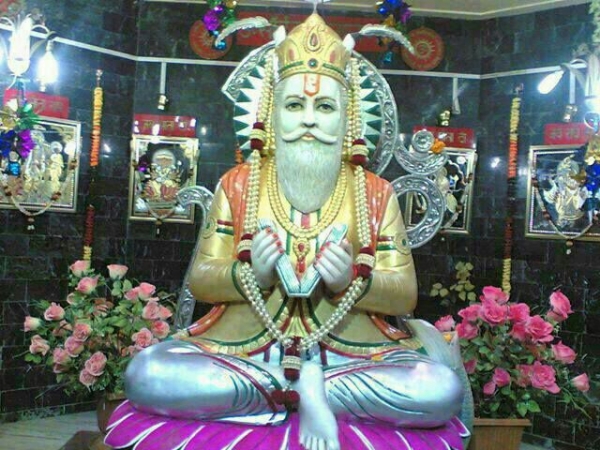
The story of being called 'Jhulelal' is interesting. Uderolal became famous because as a child, the cradle of Uderolal would swing on its own and thus the name 'Jhulelal'. Jhulelal was a man of miracles, and it is believed that through his miracles he opened the eyes of the oppressor and provided justice to Sindhis. After several failed attempts to convert the people, Mirkhshah finally decided to meet young Udaichand, being hopeful about whom the Sindhis denied conversion.
When Mirkhshah ordered his soldiers to arrest Udero, and as the officials of the court moved towards Udero, great waves of water surged towards the courtyard, drowning Mirkhshah and his courtiers. It is believed that Bhagwan Jhulelal asked Mirkhshah to rethink his decision and said "Your God and mine are the same. Then, why did you persecute my people?" Myths suggest that terrified about the circumstances, Mirkhshah begged Udero that he had realised his foolhardiness and pleaded Jhulelal to save him. Bhagwan Jhulelal then forgave Mirkhshah for his misdeeds, followed by which Mirkhshah bowed respectfully and agreed to treat Hindus and Muslims alike.
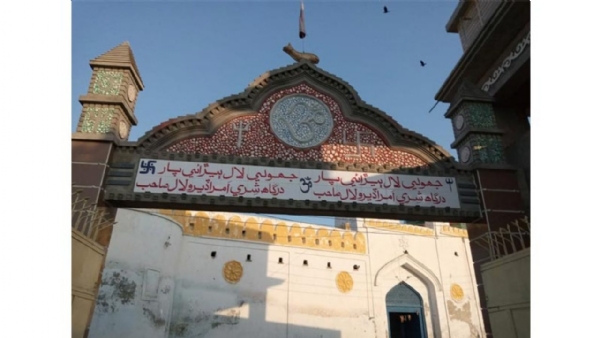
Ever since then, both Hindu and Muslims of Sindh region have been worshipping Bhagwan Jhulelal. The Sindhi deity Bhagwan Jhulelal, the reincarnation of Varunadeva, is not only considered as a saviour for the entire Sindhi community but also a symbol of unifying Hindu and Muslims in Sindh and promoting brotherhood among them. The Indian culture has several such deities inspired from contemporary incidents that comprise cults of local deities. While today, there are several Hindu communities celebrating beginning of their new years, Sindhis celebrate today the fresh beginning and the new dawn that the community witnessed because of Bhagwan Jhulelal.
--
